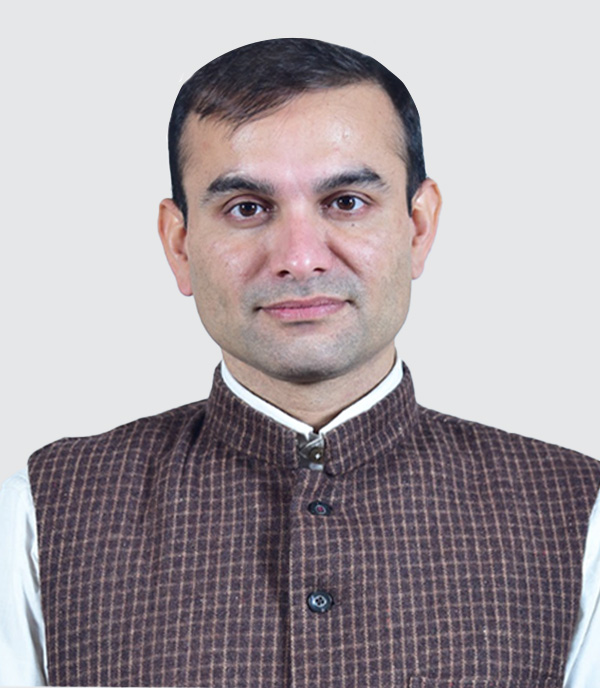The case for smart payments in India’s public finance future
 by Mitul Thapliyal and Anant Jayant Natu
by Mitul Thapliyal and Anant Jayant Natu Apr 24, 2025
Apr 24, 2025 5 min
5 min
India’s public finance reforms like TSA and SNA-SPARSH have saved ₹26,000 crore in interest costs. Odisha’s Smart Payment System pilot shows how real-time, automated fund disbursement can enhance governance, reduce delays, and improve last-mile delivery.
India’s public finance system has saved ₹26,000 crore in interest costs through reforms like TSA and SNA-SPARSH, enabling near real-time fund release. Yet, actual payments to beneficiaries often face delays due to manual approvals. Odisha’s pilot of a Smart Payment System under its MUKTA scheme offers a glimpse into the future — combining JIT fund release with rule-based automation. Scaling this model nationwide can eliminate delays, reduce administrative burden, and build trust in public service delivery. The next leap: real-time, algorithm-triggered payments that ensure transparency, efficiency, and last-mile impact in governance.
During her address at the 49th Civil Accounts Day on March 1, Finance Minister Nirmala Sitharaman underscored a landmark achievement in India’s public finance management — a savings of approximately ₹26,000 crore in interest costs since 2017-18. This remarkable feat has been enabled by the implementation of the Treasury Single Account (TSA) and the Single Nodal Agency (SNA) models, which have fundamentally restructured the government’s approach to fund disbursement.
At the heart of this transformation lies the shift to the SNA system for Centrally Sponsored Schemes (CSS), which has consolidated banking arrangements, curtailed idle funds (float) in bank accounts, and enhanced transparency in fund utilization. The subsequent transition to SNA-SPARSH (System for Payments and Reporting Across Sectors Holistically) has taken this evolution a step further — bringing the system closer to a true Just-In-Time (JIT) model of public expenditure.
The traditional model of credit or push-based fund release, where funds were disbursed in advance to implementing agencies, has now given way to a debit or pull-based system under SNA-SPARSH. In this framework, a debit to the Central Pool occurs only when an implementing agency issues a payment instruction, effectively pulling funds in real-time from the TSA to the end beneficiary’s account. This has significantly reduced the float across thousands of government bank accounts and, in doing so, has lowered the government’s borrowing requirements and associated interest burdens.
However, while SNA-SPARSH has enabled real-time fund release, the vision of real-time payments — the holy grail of JIT public finance — remains just out of reach. A critical time lapse still exists between the completion of work, the generation and uploading of payment files, and their subsequent approval. This delay in the final step of disbursing funds impacts frontline service delivery, particularly in vital sectors such as health, education, nutrition, and infrastructure.
The recent case in Haryana, where 600 private hospitals temporarily suspended services under the Ayushman Bharat scheme due to delayed payments, illustrates the fragility of outcomes when payment timelines falter. Although services resumed following government assurances, the incident underlines the urgent need for a more responsive, intelligent system of public payments.
Enter the Smart Payment System — a next-generation framework that builds on the successes of SNA-SPARSH but adds the critical layer of automation and algorithmic intelligence to achieve real-time, rule-based payments.
The Smart Payment System will rest on two foundational pillars:
- Efficient Fund Release: Leveraging SNA-SPARSH’s ability to pull funds directly from the treasury to the beneficiary’s bank account, ensuring a zero-float system.
- Efficient Payment Processing: Introducing real-time fund disbursement, triggered by algorithmically defined rules when predefined conditions are met, without human intervention.
For instance, under the Ayushman Bharat scheme, once a patient’s treatment is completed and verified by the State Health Authority’s claim processing doctor, the system should automatically trigger payment to the hospital. In infrastructure projects, once an engineer validates that the required work has been completed, the system should instantly initiate the payment, again, without the need for manual processing.
Such a smart system not only ensures fiscal discipline and transparency but also strengthens the last-mile impact of public expenditure. By eliminating delays and minimizing discretion, it can build trust among stakeholders, from hospitals and contractors to citizens, and ensure that government spending truly delivers on its promise.
As India continues to digitalize its governance and public finance architecture, the Smart Payment System could represent the next great leap forward — one that brings governance closer to real-time accountability, efficiency, and service delivery.
India’s public financial management has undergone a quiet but powerful transformation in recent years. From the introduction of the Treasury Single Account (TSA) to the rollout of the Single Nodal Agency (SNA) model and its advanced iteration, SNA-SPARSH, the country is steadily moving towards a Just-In-Time (JIT) funding regime. These reforms have already yielded significant dividends — ₹26,000 crore saved in interest costs since 2017-18 — by curbing idle funds and tightening fiscal discipline.
Yet, while fund release has reached near real-time through SNA-SPARSH, fund disbursement — the actual payment to beneficiaries upon completion of services — continues to suffer from procedural delays. Payments often lag due to the time it takes to generate, upload, and approve payment files, even after work has been verified. This gap undermines the potential of these financial innovations and affects real-world outcomes in sectors such as health, nutrition, and infrastructure. The recent impasse in Haryana, where private hospitals suspended services under Ayushman Bharat due to delayed payments, highlighted this critical bottleneck.
Fortunately, the solution may already be within reach.
One such promising model is emerging from the state of Odisha, which is piloting a smart payments ecosystem for its MUKTA scheme — a flagship urban wage employment initiative launched during the COVID-19 pandemic and now part of the Mukhyamantri Sahari Vikas Yojana. The program initially grappled with several familiar challenges: delayed wage payments, idle funds, and administrative inefficiencies.
To address these, the Odisha government has engineered a two-pronged system:
- A Just-In-Time fund release mechanism for the State Finance Department, enabling Urban Local Bodies (ULBs) to pull funds directly from the state’s consolidated fund.
- A rule-based payment processing platform called MUKTASoft, developed for the Housing & Urban Development Department.
Together, these components allow ULBs to transfer funds directly to beneficiaries, including wage-seekers, Self-Help Groups (SHGs), and vendors, the moment payment conditions are met. The system is designed to autonomously trigger payments based on preset rules, significantly reducing manual intervention and easing the administrative burden on local officials.
Now being piloted in 23 of the state’s 149 ULBs, early indicators are promising: the project has effectively eliminated idle fund parking and cut payment delays by 57%. These are not just efficiency improvements — they are tangible enhancements in governance and service delivery.
Odisha’s smart payment model offers a glimpse into the future of public payments in India. By integrating rule-based algorithms into the SNA-SPARSH framework, the Government of India can unlock the next stage of reform — one where payments are not only just-in-time but also just-in-context.
Imagine a system where, once a hospital successfully treats a patient under Ayushman Bharat and a doctor certifies the claim, the payment is instantly credited — no paperwork, no waiting. Or where, upon an engineer’s digital verification of a completed infrastructure milestone, contractor payments are auto-triggered. This isn’t a far-off dream — it’s a logical next step built on the foundation already laid by TSA, SNA, and SPARSH.
The call to action is clear: the central government should consider a final, focused reform of the SNA-SPARSH system — one that adds autonomous, rules-based payment processing. By doing so, it can complete the JIT payments architecture, reduce administrative overhead, and ensure beneficiaries and vendors are paid swiftly and fairly.
As these reforms scale, India could soon emerge as a global exemplar in digital public finance, where governance is lean, responsive, and citizen-centric.
This op-ed was first published on etedge-insights on the 22nd of April, 2025
Written by

Mitul Thapliyal
Managing Partner
Leave comments